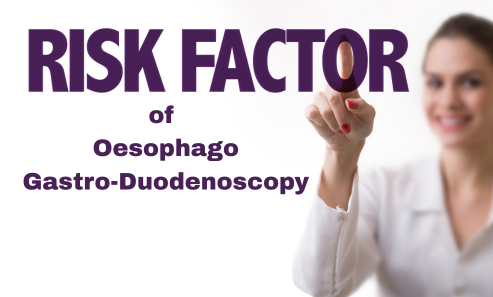




1. Definition
OGD (Oesophago-Gastro-Duodenoscopy), also known as upper GI endoscopy, is a minimally invasive diagnostic and therapeutic procedure used to visualize the upper gastrointestinal tract. This includes the:
2. Purpose
3. When is it recommended?

Primary type of OGD.
Used to visualize and assess the upper GI tract.
Detects ulcers, inflammation, tumors, and strictures.

Performed to treat or manage GI conditions.
May involve:

Done in urgent cases like GI bleeding or foreign body ingestion.
Used to locate and stop active bleeding.
Chronic heartburn or acid reflux.
Persistent nausea or vomiting.
Bloating, indigestion, or pain after eating.
Black or tarry stools (melena).
Vomiting blood (hematemesis).
Anemia due to chronic blood loss.
Difficulty swallowing (dysphagia).
Painful swallowing (odynophagia).
Unexplained weight loss.
Loss of appetite.
Recurrent abdominal pain.

Acid reflux damages the esophagus.
Can lead to Barrett’s esophagus.
OGD is used to evaluate the damage.
H. pylori infection or NSAID overuse causes ulcers.
OGD detects and treats ulcers.
Causes:
Causes:
Infectious esophagitis (due to Candida or herpes).
Gastritis (stomach inflammation).
Avoid spicy, acidic, and fatty foods.
Eat smaller, more frequent meals.
Stay hydrated.
Both increase acid reflux and GI issues.
Quitting reduces inflammation.
PPIs (proton pump inhibitors) reduce stomach acid.
Lifestyle changes prevent esophageal damage.
Reduces pressure on the stomach.
Lowers GERD risk.
Excessive NSAID use increases the risk of ulcers and bleeding.
Use alternatives when possible.
PPIs and H2 blockers reduce stomach acid.
Antibiotics treat H. pylori infections.
Antacids relieve heartburn symptoms.
Polypectomy: Removing polyps.
Hemostasis: Stopping GI bleeding with clips or thermal coagulation.
Dilation: Widening strictures with balloons.
Dietary changes.
Avoiding triggers like caffeine, alcohol, and spicy foods.
Weight management.

Fasting for 6-8 hours before the procedure.
Medication adjustments (if required).
Sedation or local anesthetic is administered.

Patient lies on their side.
Mouthguard placed to prevent biting the scope.
Flexible endoscope with a camera is inserted through the mouth.
Passed down the esophagus, stomach, and duodenum.
Visualization of the GI tract.
Biopsy, removal, or treatment is performed if necessary.

Mild throat discomfort for a few hours.
No eating or drinking until swallowing returns to normal.
Continue prescribed PPIs, antibiotics, or antacids.
Avoid NSAIDs or blood thinners temporarily.
Results are reviewed with the patient.
Follow-up appointment scheduled if biopsies are taken.